DNA, deoxyribose nucleic acid, is present in the cell’s nucleus. DNA, a gene containing chromosomes, passes from parents to offspring. It binds around the histone protein, which gets condensed and forms chromosomes.
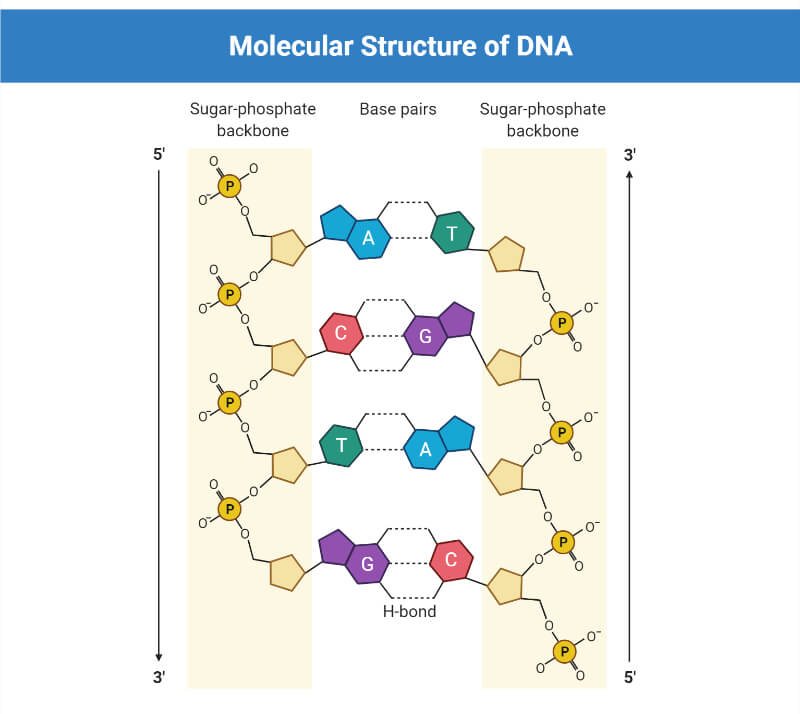
So, chromosomes are condensed histone proteins and DNA molecules. Genes are sequences that are present in structures called chromosomes. Each chromosome contains many or an infinite number of genes. Each gene consists of sequences of DNA that encode specific proteins or traits. These proteins are responsible for the expression of physical features or traits. Moreover, The two alleles that jointly make up each pair of chromosomes carry genetic material specific to that gene.
Chromosomes are in pairs. Human has 46 chromosomes. A person inherits two pairs of chromosomes: 23 from their mother and 23 from their father. A pair of chromosomes called X and Y chromosomes identify whether an embryo is male or female.
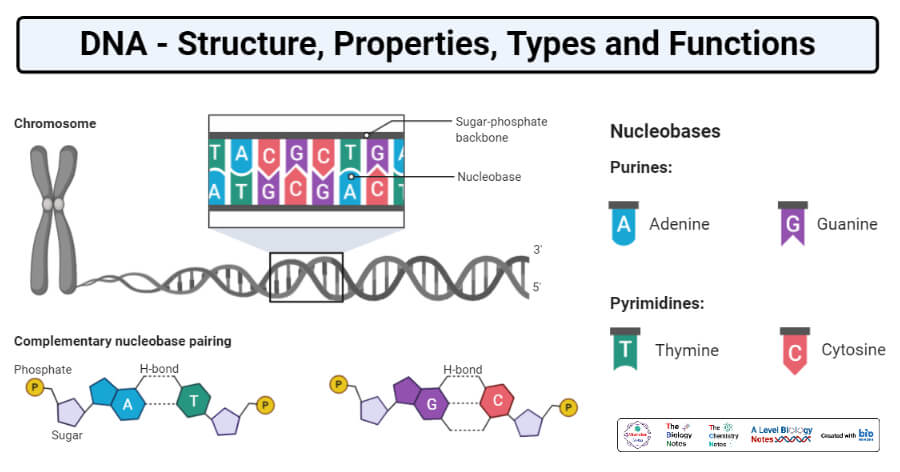
A gene consists of four nucleotide bases. Nucleotides are building blocks of nucleic acids that are composed of nitrogen bases. DNA contains Adenine (A), Cytosine (C), Guanine (G), and Thymine (T), whereas RNA contains adenine, guanine, cytosine, and uracil (U). Nucleotide sequences are unique to each gene. Purines are double-ring bases that include adenine and guanine. Pyrimidines are single-ring bases that include cytosine and thymine. Different bases pair up together via bonds, such as adenine pairs with thymine and cytosine pairs with guanine.
Interesting Science Videos
What is a Gene?
All of the genetic information of an organism is called the genome. A gene is a basic unit of heredity that specifies a trait. Genes are a segment of DNA (Deoxyribonucleic acid) that contributes genetic traits, characteristics, or functions. It contains biological instructions and is responsible for DNA structure development, growth, and reproduction of life. Genes code for a specific protein synthesis. Gene are transcribed to RNA molecules and then translated to protein, known as central dogma. These proteins influence the immune system and hormone production. Moreover, it leads to the expression of physical characteristics like hair color, height, blood group, and eye color.
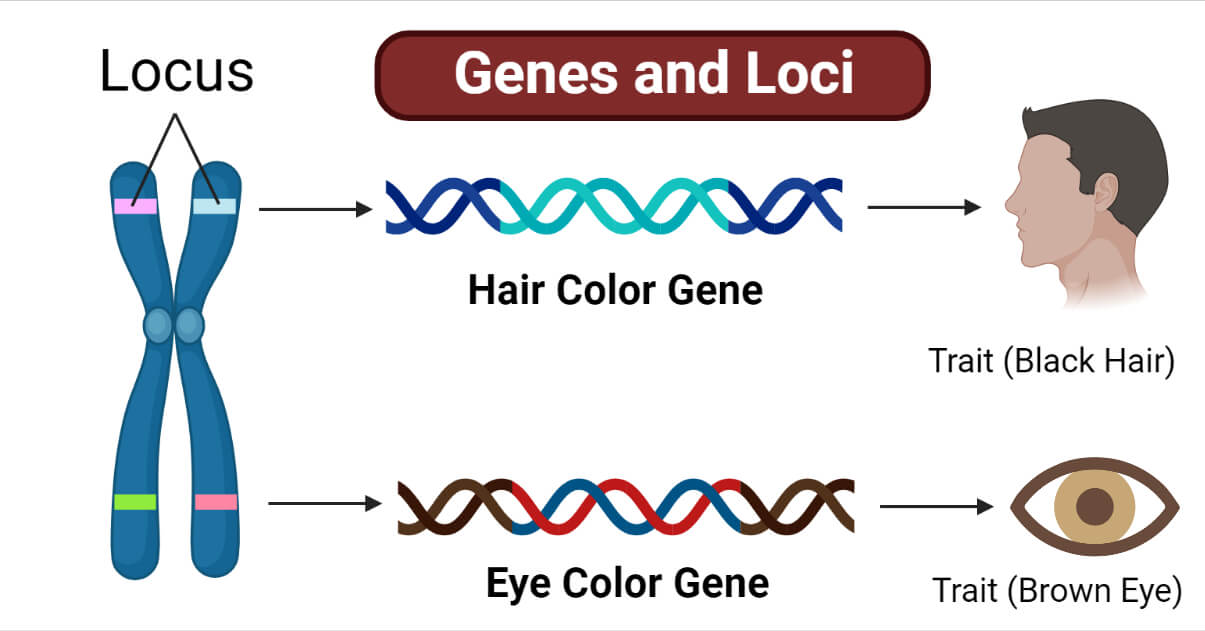
Genes come from a parent’s offspring. It is responsible for passing human features from one generation to another generation because gene determines an organism’s genotype.
Genes contain both coding and non-coding regions. Coding regions, known as exons, are the parts of transcription that transcripted into eventual protein. Non-coding regions, often known as introns, are not part of transcription but fulfill numerous other functions, such as regulation of transcription.
What is an Allele?
Different forms or variants of the same gene is known as an allele. Alleles are present in the common location on a chromosome. Gene’s locus is the location on the chromosome where alleles are present. It determines an organism’s diverse phenotype in the same traits. Gene variants code for the same trait as hair color and eye color but differ in the expression of the trait, such as color of eye (brown eye color versus black eye color) and hair color (brown hair vs blonde hair). It is the result of different alleles of a specific gene. One example is the ABO blood type system in humans such as A, B, AB, and O. If the blood type symbolizes the letter i, the upper case represents dominance, and the lower case represents recessiveness.
| Allele | Codes |
| IA | Type A blood |
| IB | Type B blood |
| i | Type O blood |
Cells having two sets of chromosomes are known as homologous pairs. These chromosomes have the same genes, but dissimilar variants are called alleles. The gene carries two or more possible alleles. An individual or Human inherits two alleles or two gene variants for each gene, one inherited from each parent. Homozygous genotype means one has identical alleles on the maternal and paternal chromosomes. TT is a genotype for a person having two identical alleles for a particular trait (tallness). An individual that has different alleles is known as a heterozygous genotype. For example, Tt is a genotype for a person. T for tall stature and t for short stature.
A person might be homozygous dominant or homozygous recessive. A person is referred to as homozygous dominant if they have two dominant alleles, whereas a person having two recessive alleles (tt for short stature) is called homozygous recessive. For example, the symbolization of homozygous dominant is BB, and homozygous recessive is bb.
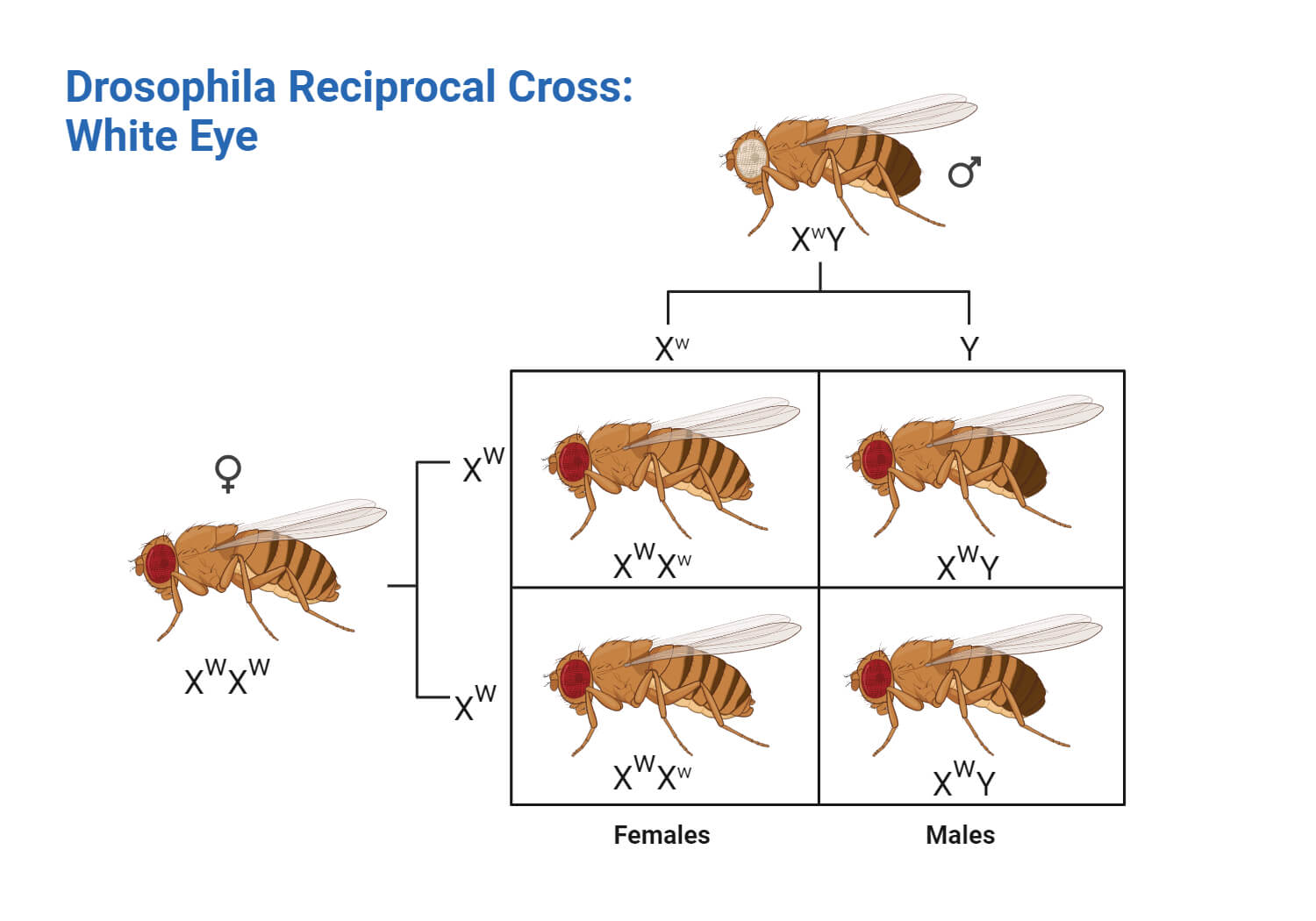
Dominant Allele and Recessive Allele
Alleles might be dominant or recessive. An allele that determines the dominant phenotype, the individual has one copy of the allele, which can come from just one parent is called a dominant allele. On the other hand, an allele that does not indicate any traits or features when paired with a dominant allele is called a recessive allele. A recessive allele determines a recessive phenotype where the individual must have two copies, one from each parent.
For example:
Eye Color
- The brown eye allele is dominant to the blue eye allele in the case of eye color.
- This implies that a child who inherits a brown allele from their father and a blue allele from their mother will have brown eyes.
- But a child who carries two blue alleles will have the blue-eye phenotype.
Isoalleles are similar or different alleles with similar phenotypes and variant expressions. Pseudoalleles are alleles when two genetic loci give rise to the same phenotype in both cis and trans positions.
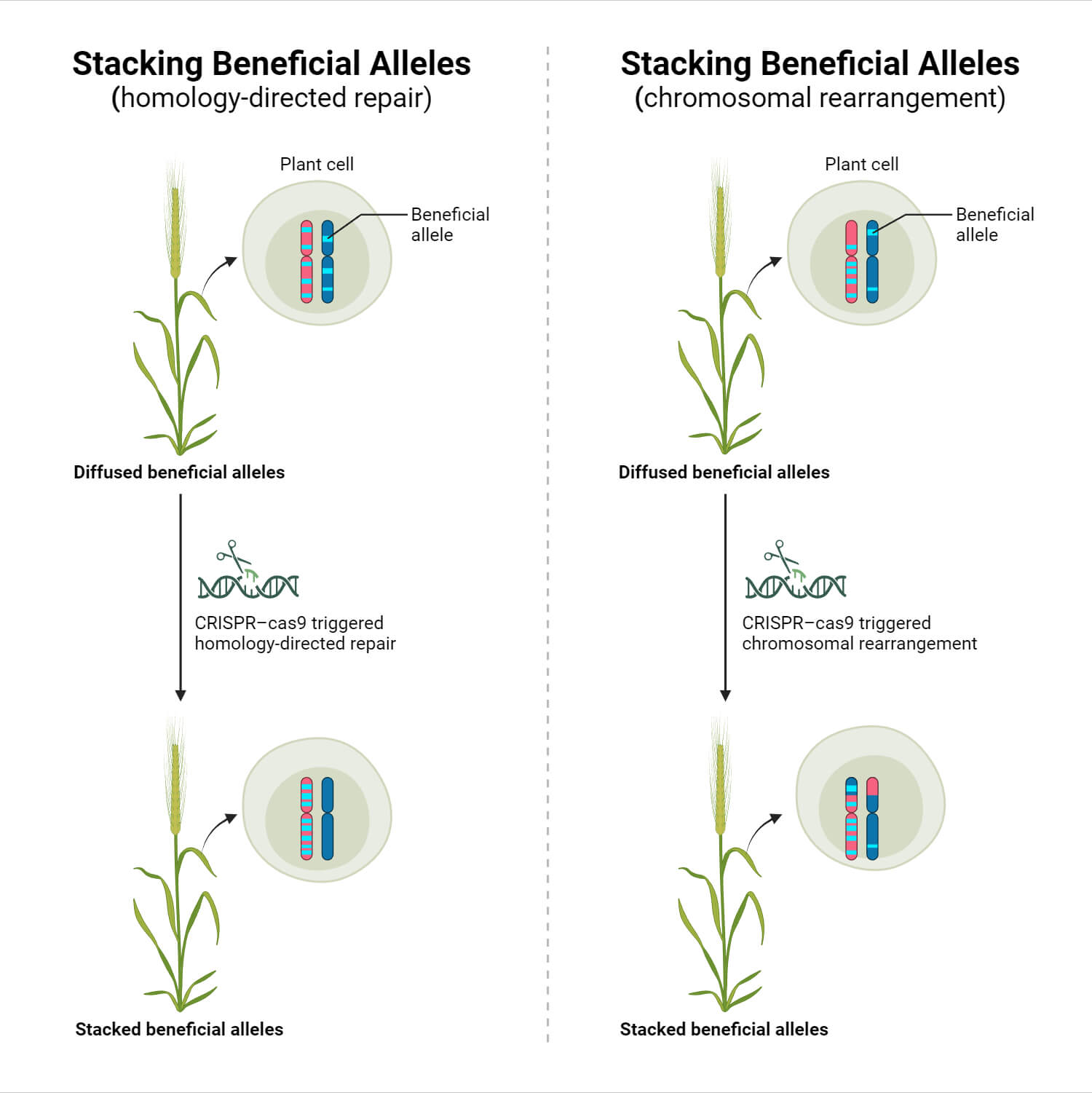
Differences Between a Gene and an Allele
The main difference between a gene and an allele is that a gene is a stretch of DNA or RNA that determines a specific trait, and an allele brings variations to a single trait.
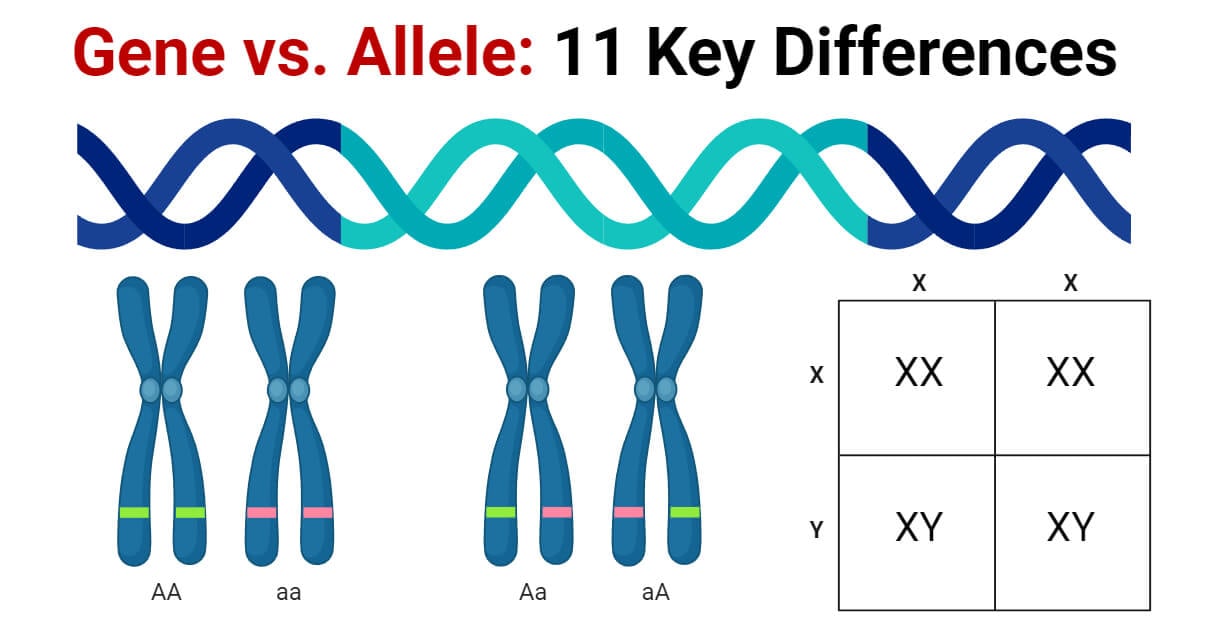
| S.N. | Gene | Allele |
| 1. | A gene is a short sequence of DNA which determines a specific trait. | An allele is a different variant of a particular gene. |
| 2. | A single gene determines a particular trait in an individual. | Two or multiple alleles bring variation and uniqueness to the trait. |
| 3. | Gene accounts for the expression of traits. | Alleles are responsible for the expression of variations of a given trait. |
| 4 | Number per genus locus- One | Number per genus locus- two |
| 5. | Found in all organisms. | It identifies in multi-genome organisms. |
| 6. | It does not occur in pairs. | It always occurs in pairs. |
| 7. | It determines an organism’s genotype. It encodes one protein. | It identifies an organism’s phenotype. It produces the opposite phenotype. |
| 8. | It creates individuals. | It brings differences to individuals in the population. |
| 9. | An allele is a type of gene. | Alleles are of two types: Paternal vs maternal; Dominant vs recessive. |
| 10. | A gene may have many different alleles. | An individual can have a pair of alleles for a particular gene, which may be homozygotes, heterozygotes, dominant, or recessive. |
| 11. | Eye color, hair color, hairline shape, skin pigmentation | Blue eyes, brown eyes, black hair, blonde hair, V-shaped hairline, dark skin |
References
- https://genome.cshlp.org/content/17/6/669.full.html
- https://www.msdmanuals.com/home/fundamentals/genetics/genes-and-chromosomes
- https://www.medicalnewstoday.com/articles/120574#what-are-they-made-of
- https://www.technologynetworks.com/neuroscience/articles/gene-vs-allele-definition-difference-and-comparison-331835
- https://www.toppr.com/guides/biology/difference-between/gene-and-allele/
- https://www.vedantu.com/biology/difference-between-gene-and-allele
- https://www.researchgate.net/publication/313839960_Difference_Between_Gene_and_Allele
- https://www.diffen.com/difference/Allele_vs_Gene
- https://pediaa.com/difference-between-gene-and-allele/
- https://byjus.com/biology/difference-between-gene-and-allele/
- https://www.thoughtco.com/gene-allele-difference-4171969
- https://www.britannica.com/story/whats-the-difference-between-a-gene-and-an-allele
- https://medlineplus.gov/genetics/understanding/basics/gene/
- https://byjus.com/biology/genes/
- https://www.betterhealth.vic.gov.au/health/conditionsandtreatments/genes-and-genetics
- https://www.researchgate.net/publication/313839960_Difference_Between_Gene_and_Allele
- https://plato.stanford.edu/entries/gene/
- https://www.biologyonline.com/dictionary/gene
- https://www.slideshare.net/sanjayrise/concept-of-genes
- https://www.technologynetworks.com/neuroscience/articles/gene-vs-allele-definition-difference-and-comparison-331835
- https://bio.libretexts.org/Courses/Mansfield_University_of_Pennsylvania/BSC_3271%3A_Microbiology_for_Health_Sciences_Sp21_(Kagle)/10%3A_Bacterial_Genetics/10.02%3A_Mechanisms_of_Microbial_Genetics/10.2.01%3A_What_Are_Genes
- https://www.slideshare.net/manisha31thakur/gene-structure-and-its-characteristics
- https://www.slideshare.net/KanwalNisa1/genes-258101271

Cool